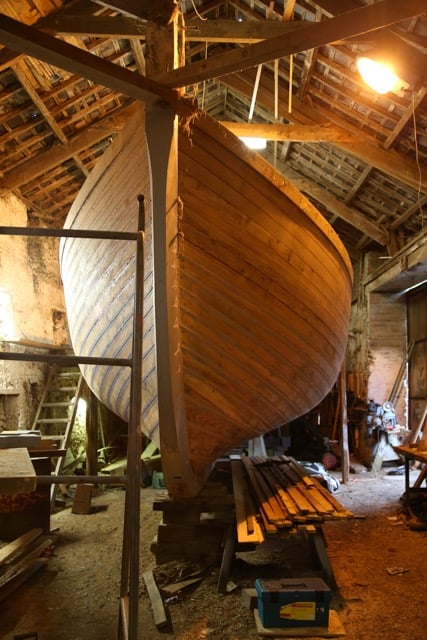Displaying items by tag: Jimmy Buffett
Have You Told Your Boat You Love Her?
I feel an empathy with Jimmy Buffett, the American singer and songwriter, whose words about his boat resonates with me:
“Yes, I own a boat… It slides across the sea… Some folks say I’m a part of it…I know it’s part of me…”
Do you feel that your boat is part of you?
Have you ever, in the boatyard during winter lay-up, when you visited your boat – as you should to check on her – caressed her hull and did it give you a loving feeling towards her and, as you left… Did you remind her that “the season isn’t too far off…”
Or, after she has been launched, on the mooring or at the marina, as you slid open the saloon hatch and stepped below, did you tell her you were glad to be back….?
“If a man must be obsessed by something, I suppose a boat is as good as anything… Perhaps a bit better than most…”
Now there’s a good reason for owning a boat!!! It was penned by the writer E B White of New Yorker magazine and many other journals, a leading American essayist whose son. Joel, was a noted naval architect known for beautiful, classic designs, including the famous W Boats.... E B said that a sailing craft was “not only beautiful, but “seductive and full of strange promise and the hint of trouble…”
Little wonder then, that they are referred to as ‘she’…..

Impressive restoration of the Ilen
In my work as a marine journalist, I am lucky enough to meet people who love boats… I remember being down at Liam Hegarty’s boatyard at Old Court near Skibbereen in West Cork, where they still work the traditional crafts of the shipwrights and where, with Gary McMahon from the Ilen School and Network for Wooden Boat Building in Limerick and all their supporters there was a magnificent, great feeling of warmth about the restoration of the Ilen, Ireland’s last surviving, largest, original wooden sailing ship.

Colm Newport's Colin Archer design at Kinsale
During the Summer I met Colm Newport, who was Master of ASGARD II and who told me about his restoration of a lovely old Colin Archer boat of Norwegian extraction which he is restoring. A “beauty in wood” as she was described…. And there are many others who love their boats, so back to the point at issue – Do you love your boat and are you prepared to admit to it in public…..?
I do and have, though getting odd looks from time-to-time and questions such as how can you love an inanimate object….? But then, is a boat an ‘inanimate object’ or does it have a life of its own? Thereby hangs another debate… Why is the old adage, for example, often honoured – that to change the name of a boat may be unlucky?

My special female - scribbler - my Sigma 33 racing at the RCYC in Cork harbour
I have changed the name of every boat I have owned…… And my present Sigma 33, which I do love, was named ‘Sarabande’ when I bought her, which I changed to SEASCAPES as I was presenting the programme on RTE at the time, but having left there I saw no reason to give RTE free publicity, so I have changed her name this season to SCRIBBLER… Rather appropriate I think …

Scribbler at Courtmacsherry cruising in West Cork this summer
I had a lot of work done on her at the yard this year.. On the evening before launching at Castlepoint Boatyard in Crosshaven, I visited to check all was in order and caressed her refurbished hull, with its new markings and paintwork, which have led several people to think I had a new boat…. , then told her I would see her afloat in the morning … And when I went aboard at the mooring for the first time…. sliding back the hatch.. told her it was good to be back…
She looks after me, so I look after her….. Sometimes I do wonder about my state of mind and of health, for I have been told that it is not a good sign to be talking to a piece of plastic…. But I don’t see her as that.....
In the Merchant of Venice, William Shakespeare wrote that “ships are but boards, sailors are but men….” But then what did he know about putting men and boats, either of wood or plastic together and what that can lead to?
There’s something about a boat …. No matter how many times its bow kisses the waves….. or pushes her way through them … you always want more…” Friendship is a boat that never sinks….
This year I have met men and women who also love their boats, respect, help and nurture them......It is small wonder that we, who love boats, may hold them in the secret places of our hearts and minds….and love to hear them spoken about nicely…..such as, after racing :“She was flying tonight…” or hearing someone say: “That’s a beautiful boat…”
When I have heard it said about mine this Summer, I have given her an extra pat…..
I do love it when others admire my special female…






















